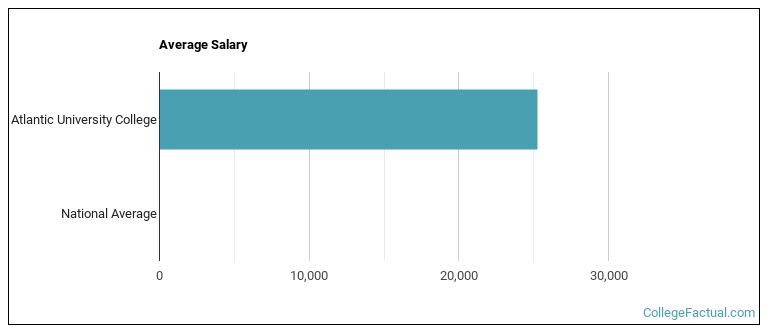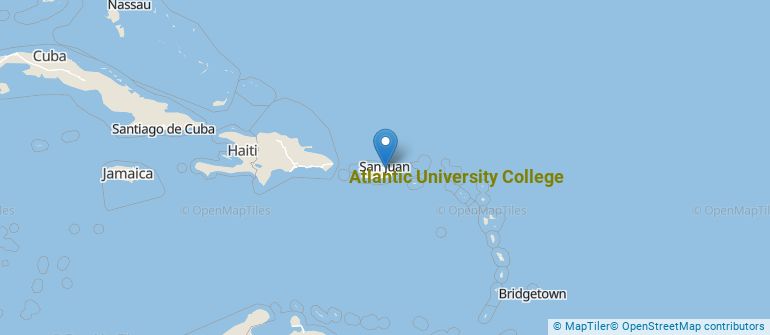 by our College Data Analytics Team
by our College Data Analytics TeamExplore the best ranked schools for the programs you are most interested in.
Atlantic University College was not ranked in College Factual's Best Overall Colleges report this year. This may be because not enough data was available.
Since Atlantic University College has an open admissions policy, being accepted to the school isn't that hard. However, a full basic things - such as a high school diploma or equivalent - may be required. Also, go over your application to make sure it is complete before you submit it.
The student to faculty ratio is often used as a measure to gauge how much access students will have to their professors - the lower the number, the better. At Atlantic University College, this rate is 27 to 1, which is high when compared to the national average of 15 to 1.
Another measure that is often used to estimate how much access students will have to their professors is how many faculty members are full-time. The idea here is that part-time faculty tend to spend less time on campus, so they may not be as available to students as full-timers.
The full-time faculty percentage at Atlantic University College is 75%. This is higher than the national average of 47%.
Atlantic University College has a freshmen retention rate of 76%. That's a good sign that full-time students like the school and their professors enough to want to stick around for another year. It's also a sign that the admissions team did a good job in choosing applicants who were a good fit for the school.
The on-time graduation rate is the percent of first-time, full time students who obtain their bachelor's degree in four years or less. This rate is 18% for first-time, full-time students at Atlantic University College, which is lower than the national rate of 33.3%.
Find out more about the retention and graduation rates at Atlantic University College.
During the 2017-2018 academic year, there were 1,489 undergraduates at Atlantic University College with 968 being full-time and 521 being part-time.
The net price is calculated by adding tuition, room, board and other costs and subtracting financial aid.Note that the net price is typically less than the published for a school. For more information on the sticker price of Atlantic University College, see our tuition and fees and room and board pages.

See which majors at Atlantic University College make the most money.
Get more details about the location of Atlantic University College.

Contact details for Atlantic University College are given below.
| Contact Details | |
|---|---|
| Address: | Colton St. # 9, Guaynabo, PR 00970 |
| Phone: | 787-720-1022 |
| Website: | www.atlanticu.edu/ |
| Most Popular Majors | Bachelor’s Degrees | Average Salary of Graduates |
|---|---|---|
| Computer Software & Applications | 141 | $15,617 |
| Graphic Communications | 50 | $15,397 |
| Design & Applied Arts | 28 | NA |
| Film, Video & Photographic Arts | 12 | NA |
| Information Science | 5 | NA |
If you’re considering Atlantic University College, here are some more schools you may be interested in knowing more about.
Curious on how these schools stack up against Atlantic University College? Pit them head to head with College Combat, our free interactive tool that lets you compare college on the features that matter most to you!
Footnotes
*The racial-ethnic minorities count is calculated by taking the total number of students and subtracting white students, international students, and students whose race/ethnicity was unknown. This number is then divided by the total number of students at the school to obtain the racial-ethnic minorities percentage.
References
More about our data sources and methodologies.